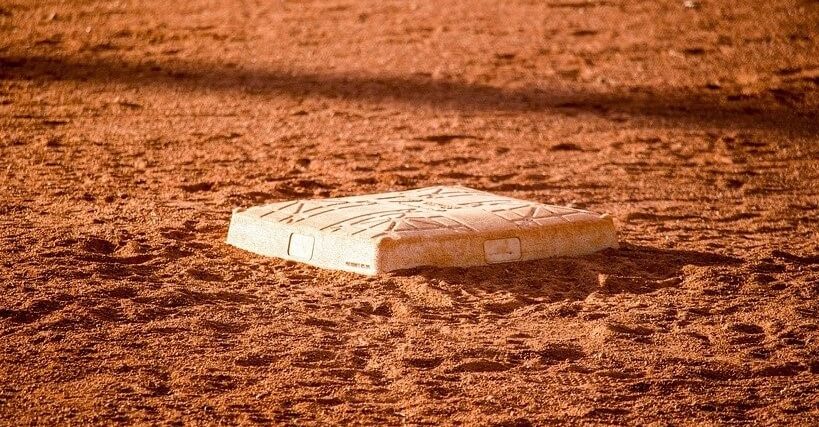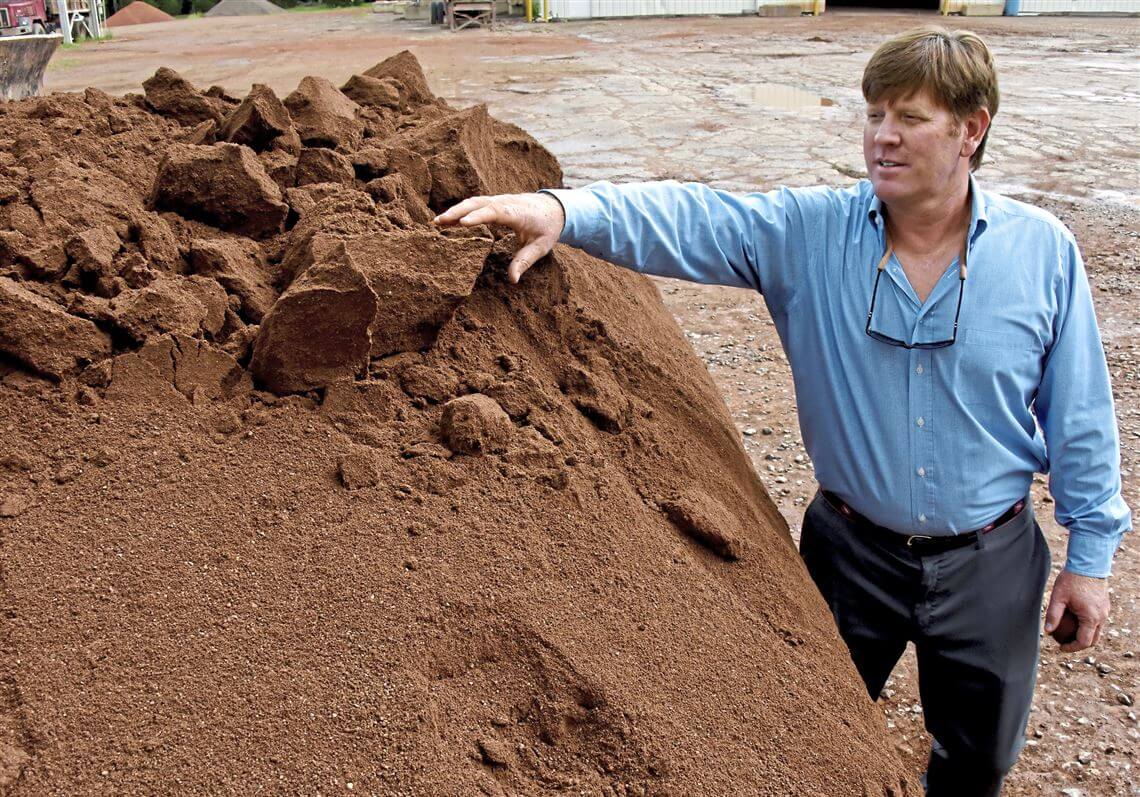Baseball would simply not be baseball without the dirt infields. As former MLB pitcher Jim Kaat quipped, “If you want to be remembered, play on dirt”. The distinctive reddish-brown dirt of the infield, known officially as the “skinned” portion of the field, is an iconic part of America’s pastime. For over 150 years, players have slid into bases kicking up dust clouds, infielders have scooped up ground balls leaving little divots, and pitchers have dug their landing spot on the mound.
The sights, sounds, and smells of the dirt are intrinsically woven into the fabric of the game. While artificial turf has replaced grass and dirt on some modern fields, the majority retain traditional dirt infields as a crucial element of gameplay strategy and cherished part of baseball’s heritage. But what exactly is this magical substance players have competed on for generations?
Official Name
The official term for the dirt used on a baseball field’s infield is “infield mix”. This term encompasses the precise blend of materials that make up the top layer of a baseball infield. While fans and players alike frequently refer to it simply as “baseball dirt,” the proper name according to industry experts is infield mix.
This reflects the engineered nature of the dirt, which contains a specific ratio of sand, silt, and clay tailored for ideal performance during baseball games. The exact composition varies between fields, but a high-quality infield mix optimized for drainage, moisture retention, and playability is universally known in the sports turf industry as infield mix.
Composition

Baseball field dirt, also known as infield mix, is made up of a precise combination of materials including sand, silt, clay, and sometimes other amendments. The sand forms the base and provides stability and drainage. Silt particles help bind the mix together. Clay contributes cohesion, moisture retention, and plasticity. A typical infield mix contains 70-80% sand, up to 30% silt, and around 10-15% clay. The exact composition can vary depending on the climate and needs of the field.
Some fields add amendments like calcined clay or vitrified clay to help with moisture control and stability. High quality infield mixes are specially engineered and blended for optimal performance. The precise combination of particle sizes and materials in the dirt significantly impacts the playability, speed, and safety of the field.
Texture
The dirt on a baseball field is finely graded and groomed to produce a specific texture that is ideal for gameplay. This texture allows for appropriate and predictable bounces of the baseball when hit or thrown to the infield. The dirt particles are sorted to be smooth yet grippy, preventing bad hops while still allowing players to dig their cleats in when running or fielding balls.
Getting the texture right is crucial, as too fine or sandy of a consistency can lead to unpredictable bounces and loose footing, while overly compacted and clumpy dirt hinders mobility. Teams take great care to maintain the optimal texture through regular dragging, watering, and replacements of the infield mix. The right balance of silt, clay, and organic matter provides great traction for players while keeping the ball bouncing true.
Maintenance
Proper maintenance of the infield dirt is crucial for safe play and field longevity. The dirt must be regularly groomed to keep it loose and consistent in texture. Maintenance practices focus on achieving an ideal moisture level, preventing compaction, and filling low spots.
Throughout the season, the field should be dragged daily with a steel mat drag or nail drag before games to loosen any compacted areas and level the surface. Moisture content is monitored and adjusted as needed by watering or aerating. Raking is done to break up lumps, smooth rough spots, and redistribute worn areas. Holes and low spots get filled in with fresh clay/dirt mixes.
In the off-season, renovations may take place, including scarifying the surface, laser grading, and replacing large sections of the infield dirt. Proper maintenance ensures ideal playing conditions and extends the life of the field.
Regional Differences

The composition of baseball field dirt can vary significantly by region depending on climate and available materials. In wetter climates like the Pacific Northwest, dirt mixes tend to have higher clay content to reduce water absorption. Drier climates like the Southwest use more sandy soils for drainage.
The Northeast and Midwest regions heavily utilize special clay soil from Slippery Rock, Pennsylvania to create firm, fast, and consistent infields. Areas in the South and West Coast may use more local materials.
The ratios of clay, silt, and sand components are adjusted to optimize moisture management and stability based on the climate. Fields in rainy areas need more clay and fields in dry areas need more sand. Grounds crews carefully blend soils and add conditioners like calcined clay to fine-tune moisture absorption, hardness, and consistency across regions.
Alternate Names
While the official term is “infield mix”, baseball field dirt goes by many other nicknames and slang terms. Fans and players alike often simply call it “baseball dirt” or “baseball clay”.
Some other popular alternate names include:
- Diamond dirt
- Skin
- Clay
- Red dirt
These casual terms refer to the distinctive red-orange hue that makes up the majority of infield mix at most baseball fields. Specific branded infield mix products like DuraEdge®, Turface®, and Beam Clay® have also become synonymous with baseball clay.
So while “infield mix” is the proper name, baseball fans know exactly what you mean when referring to “baseball dirt” or any of its many colorful nicknames. The varied terminology reflects the integral role this material plays in America’s pastime.
Signature Dirt
Each Major League Baseball stadium has its own unique dirt that groundskeepers carefully maintain. This signature dirt showcases aspects of the ballpark’s personality and geographic location.
For example, Dodger Stadium is known for its reddish dirt which comes from local soil in Palm Springs. The Baltimore Orioles play on dirt with a distinctive orange hue mixed with sand from the Chesapeake Bay area. The Detroit Tigers’ field has an unusually high clay content to reduce dust clouds when players slide into bases.
Wrigley Field in Chicago uses a sandy dirt mix allowing for excellent drainage, while Coors Field in Denver has grittier gravel that helps balls travel farther in the high altitude. Fenway Park dirt contains extra peat to soften the field for decades of play.
Some ballparks even keep their special dirt mix a secret recipe to preserve an edge for players. The uniqueness of each stadium’s dirt showcases regional soils while adding character to Major League Baseball’s fields.
Regulations

The official regulations around baseball field dirt are governed by Major League Baseball (MLB). According to the MLB glossary, there are some standards that must be followed:
-
The infield dirt portion must extend 95 feet from the back point of home plate to the front edge of the pitcher’s plate. However, the exact measurement is at the discretion of the groundskeeper.
-
The pitcher’s plate (rubber) must be 10 inches above the level of home plate.
-
The distance between the pitcher’s rubber and home plate must be 60 feet 6 inches.
-
The baselines from home plate to first base and from home plate to third base must be 90 feet.
-
MLB is beginning to enforce the 95-foot infield dirt length at all stadiums. Previously, some teams had shorter infield dirt.
-
There are no exact regulations on the composition or texture of the dirt. However, groundskeepers aim to create a safe yet high-performing surface.
Conclusion
Baseball wouldn’t be what it is without the field it’s played on. The dirt infield is an integral part of the game, and gives baseball its distinctive look and feel. We learned that the official name for the baseball field dirt is technically infield mix. It’s made up of clay, silt and sand particles that give it a light brown color and its signature dusty texture when dry.
Groundskeepers take special care of the infield dirt, watering and raking it to keep a consistent playing surface. While the basic composition is similar across fields, the infield mix recipe can vary in different regions to account for climate. Fans have coined colorful names for memorable infield dirt at certain ballparks, like the “beach sand” in Tampa Bay or the dark brown “tiger soil” in Detroit.
While we may take it for granted, that dusty diamond carved into the earth is an essential element that makes baseball the national pastime. When we hear the crack of the bat or watch an acrobatic catch, the dirt beneath the players’ feet connects the game to its storied history and origins. Baseball just wouldn’t be baseball without its field of dreams.








